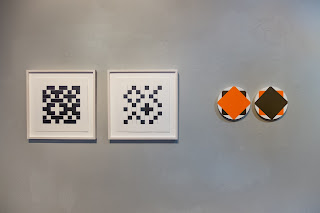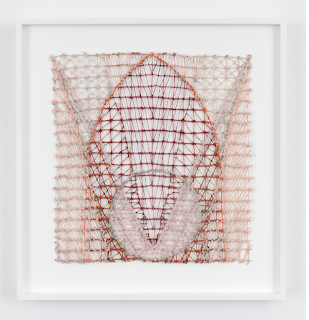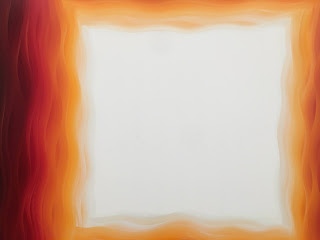Mary Schiliro's works on mylar in an installation view of Parallel Play, a jewel of a show uptown at John Molloy. The gallery buttresses its focus on Native American art with exhibitions of contemporary art that are consistently surprising, unexpected, and excellent.
Daniel G. Hill, Patricia Zarate (wall and shelves), Mary Schiliro. The themes are set up: weaves, light and shadow play, and decisive, one-shot paintings that require feats of engineering to pull off.
Daniel G. Hill: woven paper drawings and "fallen paintings" - both incised and then handled in economical but impactful ways--cut or woven.
Hill and Zarate, both members of American Abstract Artists.
The work is optical, subtle, exquisitely crafted.
Patricia Zarate paintings with a Jacob Cartwright drawing; his drawings were included in Mckenzie's Color Pencil Redux earlier this year. Zarate's paintings bring the language of signs indoors, transforming shapes into flowers-like forms that continue to evade specific readings.
Trilogy: Hill, Schiliro, Zarate. Cuts of various kinds, from literal shaping of the edge or reshaping interior to the abrupt color transitions in a drawing.
Hill's Fallen Painting, hypnotic in its transformation of fabric with precise cuts.
Equally hypnotic, cut and woven grids that rely, in part, on shadow play for structures that are simultaneously decisive and mutable.
A painting by Jacob Cartwright with sonorous color relationships within definitive geometry. The eye scrambles to organize pattern and the color harmonies aid and assist that despite unexpected variances.
A miracle of brevity by Mary Schiliro, cut mylar "dunked" into pools of colors. At a small scale, it looks easy, but how do these two colors line up so flawlessly, and the paint adhere to the surface so perfectly?
Two details of a "dunked" and layered work approximately seven feet tall.
Light and shadow intersperse with pure color and geometry, spellbinding the eye.
Julia Bland at Derek Eller in her solo exhibition Some Love Holds Water
This small textile drawings summon the geometries and all-encompassing compositions of Joseph Stella's Brooklyn Bridge paintings.
These images are clipped from the gallery website; I accidentally threw out my own.
The exhibition press release states the works "range in scale from intimate to monumental and encompass Bland’s lexicon of materials: canvas, linen, wool, dye, ink and oil paint. Canvas is pulled apart to become thread; threads are twisted together to become rope or braided into tassels. Raw wool is felted into blankets; blankets are cut up and quilted back together. Fabrics are woven on a hand loom, then twisted and torn, dyed and painted, washed and ironed, cut and sewn."
"There is a history behind the making of each artwork, and the materials themselves possess even richer past lives: wool comes from sheep; linen derives from the flax plant; found blankets, clothes, and upholstery all are imbued with personal stories. Even the geometric patterning has an origin. “Making is not really about following a certain process or tradition,” Bland writes, “but about the way all things change.”"
Insect forms, texture upon texture.

















































